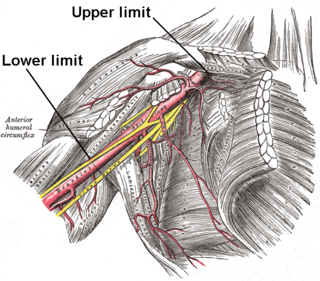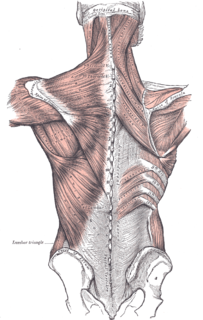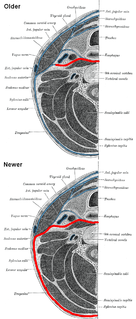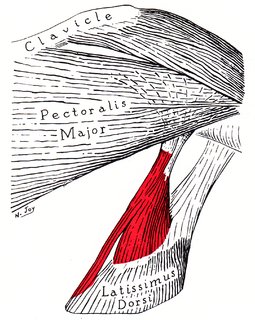| Pectoral fascia | |
|---|---|
 Superficial muscles of the chest and front of the arm. | |
| Details | |
| Identifiers | |
| Latin | fascia pectoralis |
| TA | A04.4.01.017 |
| FMA | 37803 |
| Anatomical terminology | |
The pectoral fascia is a thin lamina, covering the surface of the pectoralis major, and sending numerous prolongations between its fasciculi: it is attached, in the middle line, to the front of the sternum; above, to the clavicle; laterally and below it is continuous with the fascia of the shoulder, axilla, and thorax.
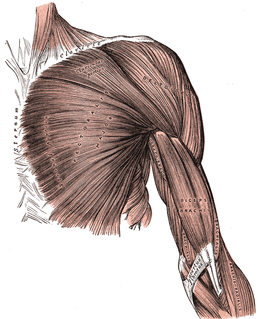
The pectoralis major is a thick, fan-shaped muscle, situated at the chest (anterior) of the human body. It makes up the bulk of the chest muscles and lies under the breast. Below the pectoralis major is the pectoralis minor, a thin, triangular muscle. In sports as well as bodybuilding, the pectoral muscles may colloquially be referred to as "pecs", "pectoral muscle" or "chest muscle" due to its being the larger and most superficial muscle in the chest area.
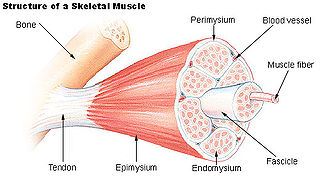
A muscle fascicle is a bundle of skeletal muscle fibers surrounded by perimysium, a type of connective tissue.

The clavicle or collarbone is a long bone that serves as a strut between the shoulder blade and the sternum or breastbone. There are two clavicles, one on the left and one on the right. The clavicle is the only long bone in the body that lies horizontally. Together with the shoulder blade it makes up the shoulder girdle. It is a touchable bone and in people who have less fat in this region, the location of the bone is clearly visible, as it creates a bulge in the skin. It receives its name from the Latin: clavicula because the bone rotates along its axis like a key when the shoulder is abducted. The clavicle is the most commonly fractured bone. It can easily be fractured due to impacts to the shoulder from the force of falling on outstretched arms or by a direct hit.
It is very thin over the upper part of the pectoralis major, but thicker in the interval between it and the latissimus dorsi, where it closes in the axillary space and forms the axillary fascia; it divides at the lateral margin of the latissimus dorsi into two layers, one of which passes in front of, and the other behind it; these proceed as far as the spinous processes of the thoracic vertebrae, to which they are attached.
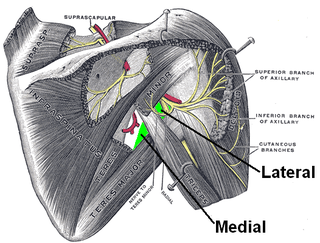
The axillary space is an anatomic space. It is further subdivided into quadrangular space, triangular space, and triangular interval. It is bounded by teres major, teres minor, medial border of the humerus, and long head of triceps brachii.
As the fascia leaves the lower edge of the pectoralis major to cross the floor of the axilla it sends a layer upward under cover of the muscle; this lamina splits to envelop the pectoralis minor, at the upper edge of which it is continuous with the coracoclavicular fascia.
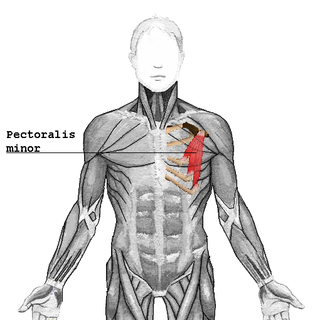
The pectoralis minor is a thin, triangular muscle, situated at the upper part of the chest, beneath the pectoralis major in the human body.
The hollow of the armpit, seen when the arm is abducted, is produced mainly by the traction of this fascia on the axillary floor, and hence the lamina is sometimes named the suspensory ligament of the axilla.
At the lower part of the thoracic region the deep fascia is well-developed, and is continuous with the fibrous sheaths of the rectus abdominis.


